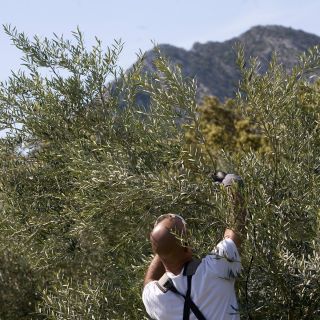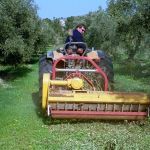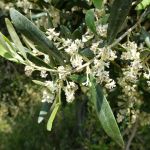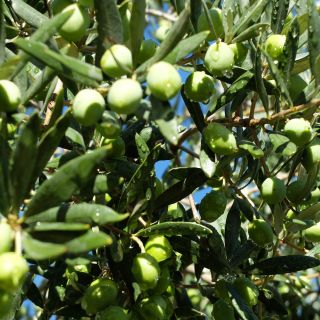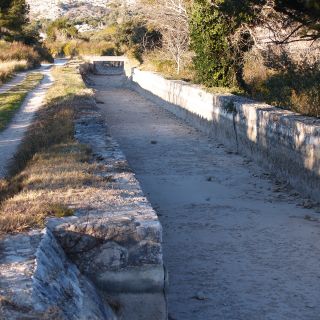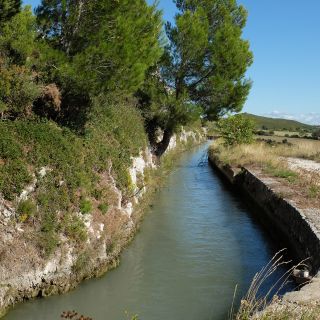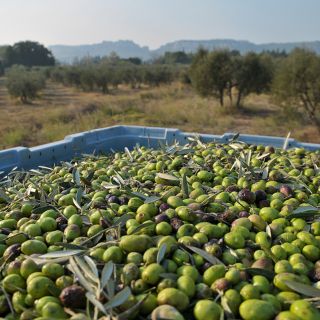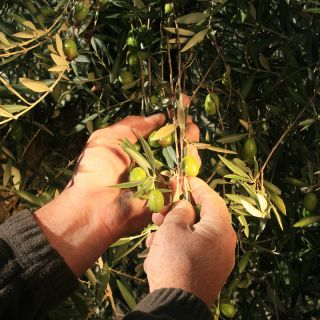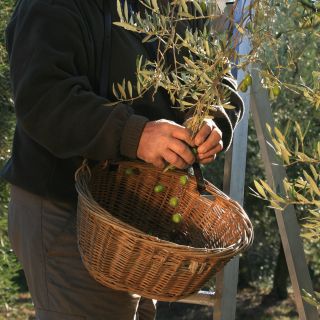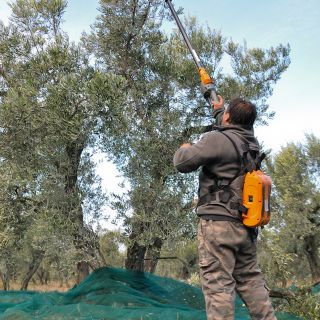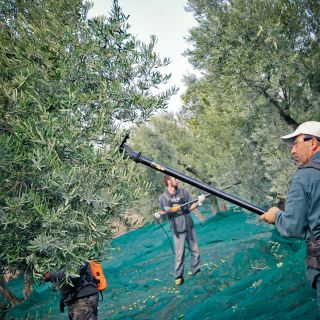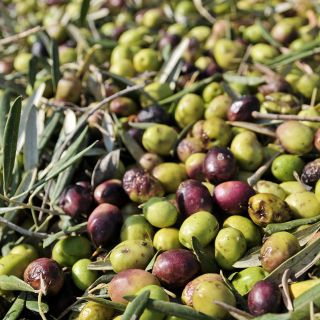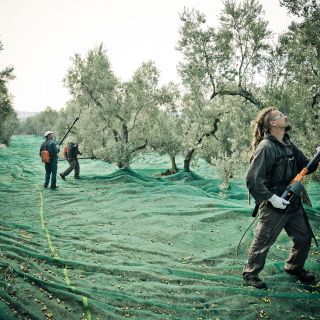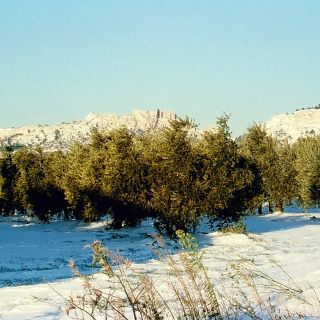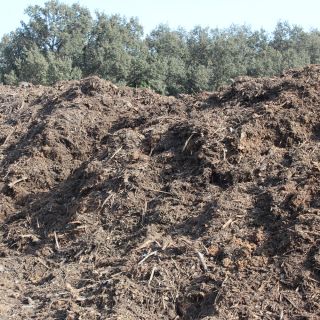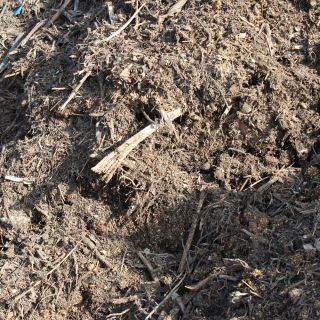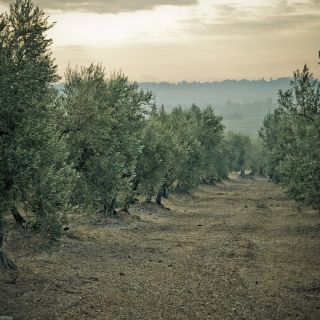SPRING
Like any fruit tree, the olive tree tends to alternate, producing fruit every other year. To avoid this, we prune our trees regularly. This involves removing the wood that bore fruit the previous year, thus promoting the growth of young and vigorous wood able to give a new and plentiful crop.
Pruning requires precision. Foliage density must be kept even to let through the light, which is vital for fruit growth and for protecting the bark from sunburn.
At Castelas, tree pruning begins in March, when frost is
no longer a risk. The pruned branches are shredded and their fertilising
elements are returned to the ground.
It's time! In spring, the olive tree awakes, and new terminal shoots appear. The buds grow longer and rounder, and swell until they burst and their flower emerges. Flowering occurs around 15 May. The trees boast a multitude of white, fragrant flowers; but only 5% of them will yield olives! This magic lasts for only a week, during which the weather must be just right: a light breeze is ideal for transporting the pollen, whereas rain and fog reduce the chance of pollination. When the flowers wither, their heart turns into a tiny olive.
SUMMER
The first olives! The green fruit grow steadily more plump, and their stone hardens. In summer, the tree treats itself to a little "nap". Its activity slows, and its leaves curl up for protection from the baking sun of the Provencal summer. A decent shower around 15 August is enough to invigorate the trees and literally bring them back to life!
Despite what you may hear, olive trees will not refuse a little water, especially when rain is scarce. In the Vallée des Baux, we are fortunate to have access to the water of the canal, which entered service in July 1914. It begins in Eyguières via the Boisgelin Canal (built in 1672) and the Craponne Canal (1554), which is fed by the River Durance. Thanks to watering, our plots are covered in grasses that are home to fauna, including many useful insects; and the trees better withstand the summer heat, keeping their fruit until harvest time.
AUTUMN
Harvest time! The olives keep on growing until they reach maturity. They change colour, and some varieties turn from soft green to mauve and then black.
The green table olives are mainly picked in September, and by hand, to allow selection by colour and size. The picking order? Salonenque for splitting, then Béruguette for splitting, followed by Verdale and Rédounale.
The mill opens from mid-October to the end of November to receive the olives for pressing. Harvest time - known as les olivades - is eagerly awaited in the Vallée des Baux de Provence. The groves fill with a festive mood and the ripe fruity smell of olives. Picking begins in bright sunshine and ends in the bitter cold, with the groves often swept by the gusting Mistral. Nets are installed right along the rows of trees, and are removed using electrical combs with vibrating tongs.
We harvest each variety at optimum ripeness. The olives leave the groves and are taken swiftly to the mill, where their oil is extracted. Speed is of the essence to fully conserve our olives' fruity flavour.
The black table olives are picked when completely ripe and black, in late November.
At the end of autumn, the olive trees once again begin a well-deserved rest: they become dormant.
WINTER
Ssshh! Winter is when the olive tree rests: It enters a state of dormancy. But the cold is essential for generating flowers, and then fruit, in sufficient quantities. This is the period to give the tree the nutrients it will need to grow when spring comes. The main inputs are nitrogen, phosphorus and potassium, which we provide in the form of compost.
Composting takes place in the grove of Les Aulnes, where we have plenty of room. Composting is the natural degradation of organic matter by micro-organisms, in the presence of moisture and oxygen. This lets us recycle the olive pomace from the mill, to which we add green waste and cut branches. After six months, the compost turns to fertiliser and is spread on the groves.
In late February / early March, when there is no apparent activity, the first buds appear.







